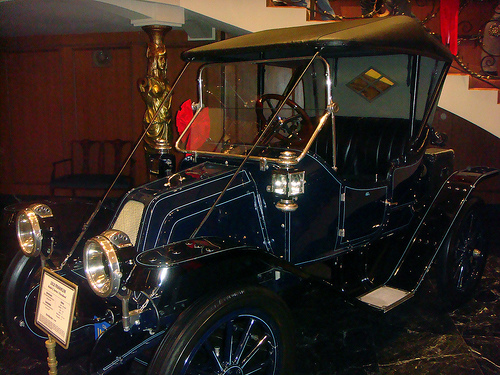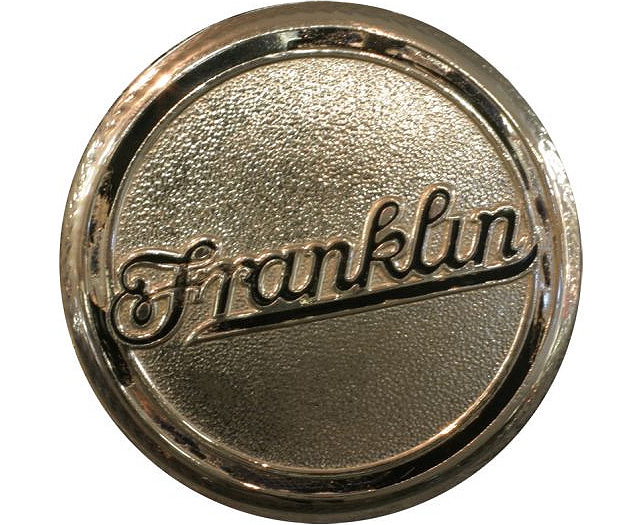1912 Franklin G Series 1 Runabout

The descriptions of the Classic Cars in the Directory were partly generated or supplemented with the help of artificial intelligence (AI). The content may occasionally not always be entirely accurate or factually correct despite careful checking.
The Franklin G Series 1 Runabout 1912 is a rare and exceptional automobile from a time when innovation and craftsmanship were at their peak. This car is a testament to the ingenuity and precision of the engineers and designers of the early 20th century, and it is considered one of the most sophisticated and advanced vehicles of its time.
Under the hood of this remarkable vehicle lies a 6-cylinder engine capable of producing up to 30 horsepower. Thanks to its unique design, the engine is air-cooled, which means that there is no need for a radiator or water pump. Instead, the engine is cooled by a large fan mounted on the crankshaft, which creates a powerful airflow that cools the engine quickly and efficiently.
The Franklin G Series 1 Runabout 1912 is also equipped with a 2-speed selective transmission, which is operated by a lever on the steering column. This allows the driver to easily switch between high and low gears, depending on the driving conditions. Additionally, the car features a multi-disc clutch and a set of high-quality brakes, which ensure smooth and safe driving even at high speeds.
When it comes to suspension and steering, the Franklin G Series 1 Runabout 1912 shines yet again. The car features a sophisticated suspension system, which consists of semi-elliptical leaf springs and a robust frame that provides exceptional stability and ride comfort. The steering is also top-notch, thanks to a gear-driven steering mechanism that delivers precise and responsive handling.
As for the design and aesthetics, the Franklin G Series 1 Runabout 1912 is a true work of art. With its polished brass accents, sleek lines, and elegant curves, this car exudes a timeless appeal that captures the essence of classic automotive design. The open-top design and spacious leather interior add to the overall charm and luxury of the vehicle.
In conclusion, the Franklin G Series 1 Runabout 1912 is a masterpiece of engineering and design, a true icon of the early automotive era. With its powerful engine, sophisticated transmission, and top-of-the-line suspension and steering, this car is a true driver's delight that offers a unique and unforgettable driving experience. Whether on the street or at a classic car show, the Franklin G Series 1 Runabout 1912 is sure to turn heads and impress even the most discerning car enthusiasts.
Milestones
- 1912: Franklin G Series 1 Runabout introduced - Powered by an air-cooled, four-cylinder engine - The car was capable of reaching a top speed of 50 mph (80 km/h) - It was a two-seater with an open-top design - The body was constructed of aluminum, making it lightweight and durable - The car was known for its innovative design, featuring features such as a flexible steering wheel and shock absorbers - In 1913, the Franklin G Series 1 Runabout was showcased at the New York Auto Show - The car was marketed as an affordable, reliable vehicle for city driving - Production of the Franklin G Series 1 Runabout continued until 1914 when it was replaced by the Franklin Model D TouringTechnical
- The Franklin G Series 1 Runabout 1912 was a two-seater, open-top vehicle. - It featured a horizontally-opposed four-cylinder engine with a displacement of 18 horsepower. - The car had a wheelbase of 8.4 feet. - The transmission was a two-speed manual, rear-wheel drive. - The car had a top speed of approximately 35 miles per hour. - It had wooden-spoke wheels with a tire size of 30 inches. - The body of the car was made of cast aluminum, which made it lightweight and durable. - The fuel tank had a capacity of 10 gallons. - The car had a unique radiator design that effectively cooled the engine without the use of a fan. - The Franklin G Series 1 Runabout 1912 used a thermo-syphon cooling system, which used the natural circulation of water to regulate engine temperature. - The car featured an advanced suspension system for its time, with independent front suspension and a semi-elliptic leaf spring rear suspension. - The car's headlights were acetylene gas-powered, while the taillights were kerosene.